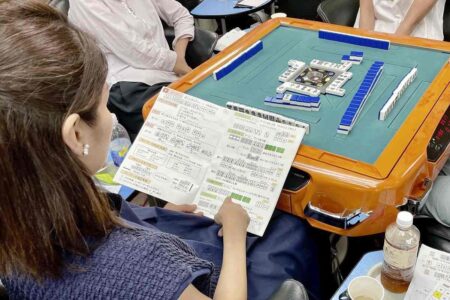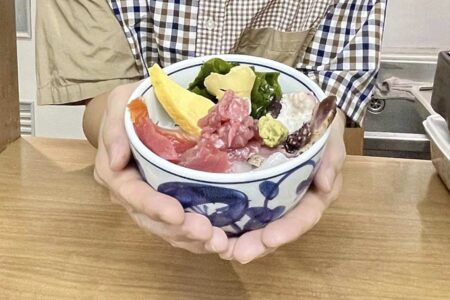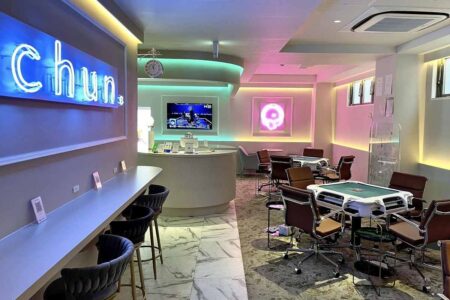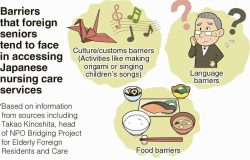Single Style / Mahjong has Become a Casual, Healthy Hobby; New Trend of Tile-Based Game has Players Enjoying Relaxed Atmosphere
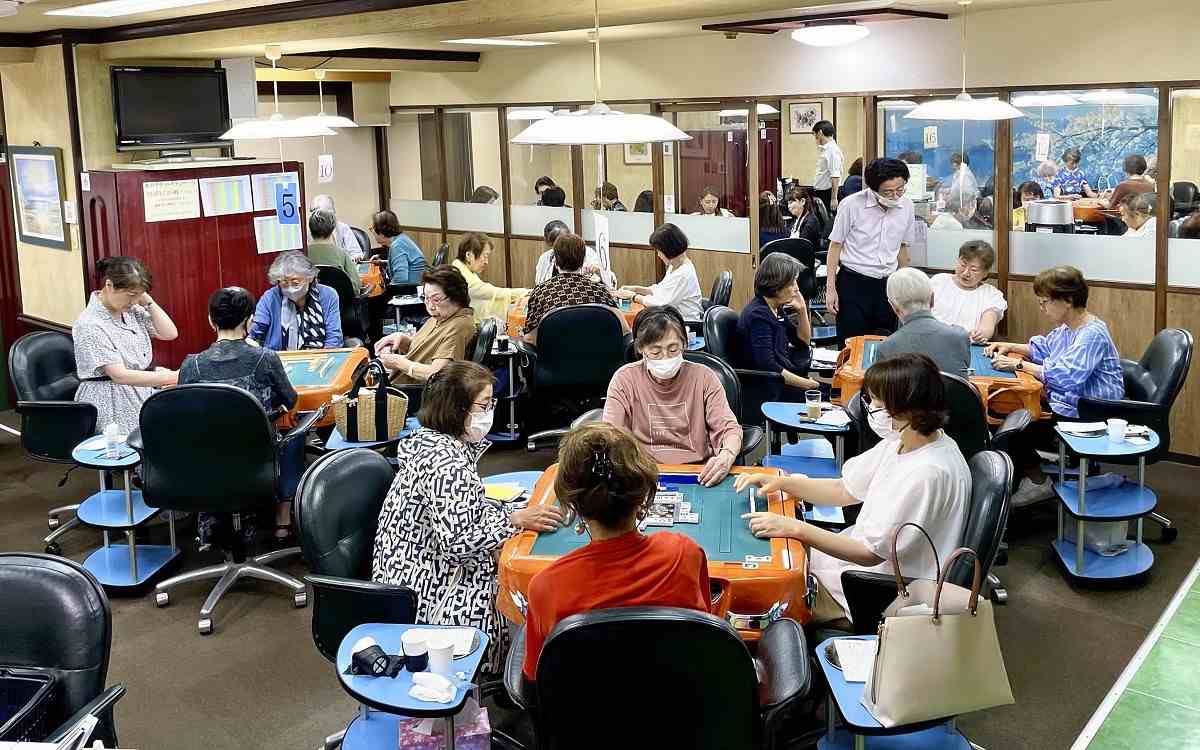
Mahjong Club Yanagi Ginza main store is packed with customers when women-only classes were held.
10:00 JST, September 16, 2024
Mahjong often conjures up images of people gambling all night long in a smoke-filled room. But a recent mahjong trend is far from that: no betting, just strangers enjoying a casual game together.
For those who are curious but afraid to go to a mahjong parlor alone, this 30-year-old reporter — a former mahjong enthusiast who used to play all day in a dormitory in their school days — explored the trend of the tile-based game.
Women-only class
“Oh, you got a good hand. Congratulations!” someone shouted at a mahjong class held at the Mahjong Club Yanagi Ginza main store in Tokyo’s Ginza district.
Eighteen tables were filled on a weekday afternoon, and applause erupted whenever someone won big. I was shocked, but also relaxed by this lively and friendly atmosphere, which I could never have imagined from my experiences.
Classes are held on weekdays for women only. You can choose from beginner, intermediate and advanced classes to play with people close to your level and get advice from the pros watching the games.
The classes’ rules are “no drinking, no smoking, no gambling.” You can even start over if you forget to draw a tile. Beginners were seen playing while looking at written guidelines and rules.
Miyoko Inose, from Ichikawa, Chiba Prefecture, comes to the parlor three days a week.
“I absolutely love the excitement of winning by using my brain to read other players’ habits,” she said.
She played with a serious look on her face during the game, but smiled after it was over and reviewed the match with others.
Chikaya Yanagida, a representative of the parlor, said about 90% of the students come to the class alone, start interacting and get to know each other.
Inose, too, has made many friends here and “broadened my social circle.”
Yanagida said: “We have had a considerable number of new customers in the past two to three years. It’s probably because our parlor has gained attention as a social venue after the COVID-19 pandemic.”
Participatory events
Ginza Hana Salon, also in Ginza, opened seven years ago. To avoid the intimidating image of mahjong, flowers are displayed at the entrance and inside the salon. Furnishings, such as tissue box holders, give it an elegant look.
The salon holds tournaments, among other events, which customers can participate in.
I played in one of the occasional weekend tournaments. It was my first time playing with a group of strangers. Twenty-eight men and women, ranging in age from 30 to senior citizens, played with serious expressions and occasional smiles.
Playing mahjong was exciting, and the event’s relaxed atmosphere, where we praised each other’s high-scoring hands, made me feel less nervous about playing in this tournament.
I played four rounds of matches against different players to compete for the highest total score. I came in first in the first round, third, fourth and second in the rest to finish the tournament in 13th place overall. I regret that I discarded a wrong tile, but I would like to play again.
Hana Salon holds fan events by inviting professionals from the M.League, a professional mahjong league launched in 2018. Young women are said to sign up for the events.
“Many newcomers seem to become fans because they think it’s cool or cute,” Hana Salon President Hanako Fujimoto said. “I think the number of fans will continue to grow.”
-

The Yomiuri Shimbun
A player reads instructions at Mahjong Club Yanagi Ginza. -

The Yomiuri Shimbun
Michiko Inose plays with a serious expression on her face. -

The Yomiuri Shimbun
Hanako Fujimoto of Ginza Flower Salon arranges flowers at her parlor. -

The Yomiuri Shimbun
A seafood bowl served at Galapagos Takadanobaba in Shinjuku Ward, Tokyo -

The Yomiuri Shimbun
Mahjong cafe “chun.”
Gourmet, photogenic places
Every mahjong parlor has its specialties. Galapagos Takadanobaba in Shinjuku Ward, Tokyo, is known for its delicious food. The menu changes depending on what is available that day.
The menu on the day I visited included a set meal of sea bream meuniere and a bowl of stir-fried pork, bell peppers and chives. The parlor’s recommendation is the seafood bowl (¥1,300 including tax). The bowl was filled with tuna, bonito, octopus and other seafood carefully selected by the parlor’s president, Chitoku Tajima. Some regular customers come for the food rather than the mahjong.
“I think it is good that there are different ways to enjoy the parlor,” Tajima said.
Kana Nakada, a former member of the idol group Nogizaka46, runs mahjong cafe “chun.” in the Akasaka district in Minato Ward, Tokyo, with the motto: “A place where even people who don’t play mahjong want to come.”
Neon lights illuminate the white interior, and the food and drinks served at the cafe are Instagrammable. Many customers are said to come for the cafe rather than the mahjong.
After checking out several parlors, I thought beginners might want to start with a mahjong class. Some cultural centers also offer mahjong classes. Since the rules are a bit complicated, it might be a good idea to start with a free smartphone app.
Online games, M.League
According to the Japan Productivity Center’s white paper on leisure, the number of mahjong players in 2022 was 5 million, up 500,000 from the previous year.
“The pandemic has helped increase the number of online games, which supports the current mahjong population,” said Tsuneyuki Takahashi, who chairs Zenjanren, the national federation of mahjong businesses. “The growing popularity of M.League as a brain sport is also a major factor.”
Takahashi said the number of opportunities for people of all ages to play has increased, with senior citizens sitting around tables at welfare facilities and classes being held for children.
“I think the environment is getting better for people to casually start playing mahjong on their own,” he said.
All four parlors interviewed offer classes for beginners. Instructors will teach you even if you are not familiar with the rules. Food and drink fees may be charged separately in addition to the class fee. No money is exchanged between customers.
The Single Style feature looks at lifestyles, activities and concerns of single people.
"JN Specialities" POPULAR ARTICLE
-

The Japan News / Weekly Edition (12/12-12/18)
-

Noodle Dining Shunsai / Rich Oyster Ramen to Savor at Odasaga; Experienced 68-year-old Owner Creates Numerous Ramen Varieties
-

The Japan News / Weekly Edition (12/5-12/11)
-

People Keep Loved Ones’ Ashes Close in Special Jewelry, Small Urns as Unique Way to Memorialize Them
-

The Japan News / Weekly Edition (12/19-12/25)
JN ACCESS RANKING
-

Tokyo Economic Security Forum to Hold Inaugural Meeting Amid Tense Global Environment
-

Keidanren Chairman Yoshinobu Tsutsui Visits Kashiwazaki-Kariwa Nuclear Power Plant; Inspects New Emergency Safety System
-

Imports of Rare Earths from China Facing Delays, May Be Caused by Deterioration of Japan-China Relations
-

University of Tokyo Professor Discusses Japanese Economic Security in Interview Ahead of Forum
-

Japan Pulls out of Vietnam Nuclear Project, Complicating Hanoi’s Power Plans
